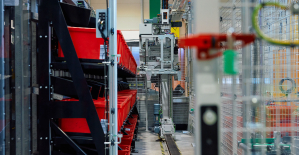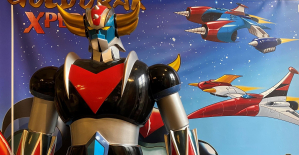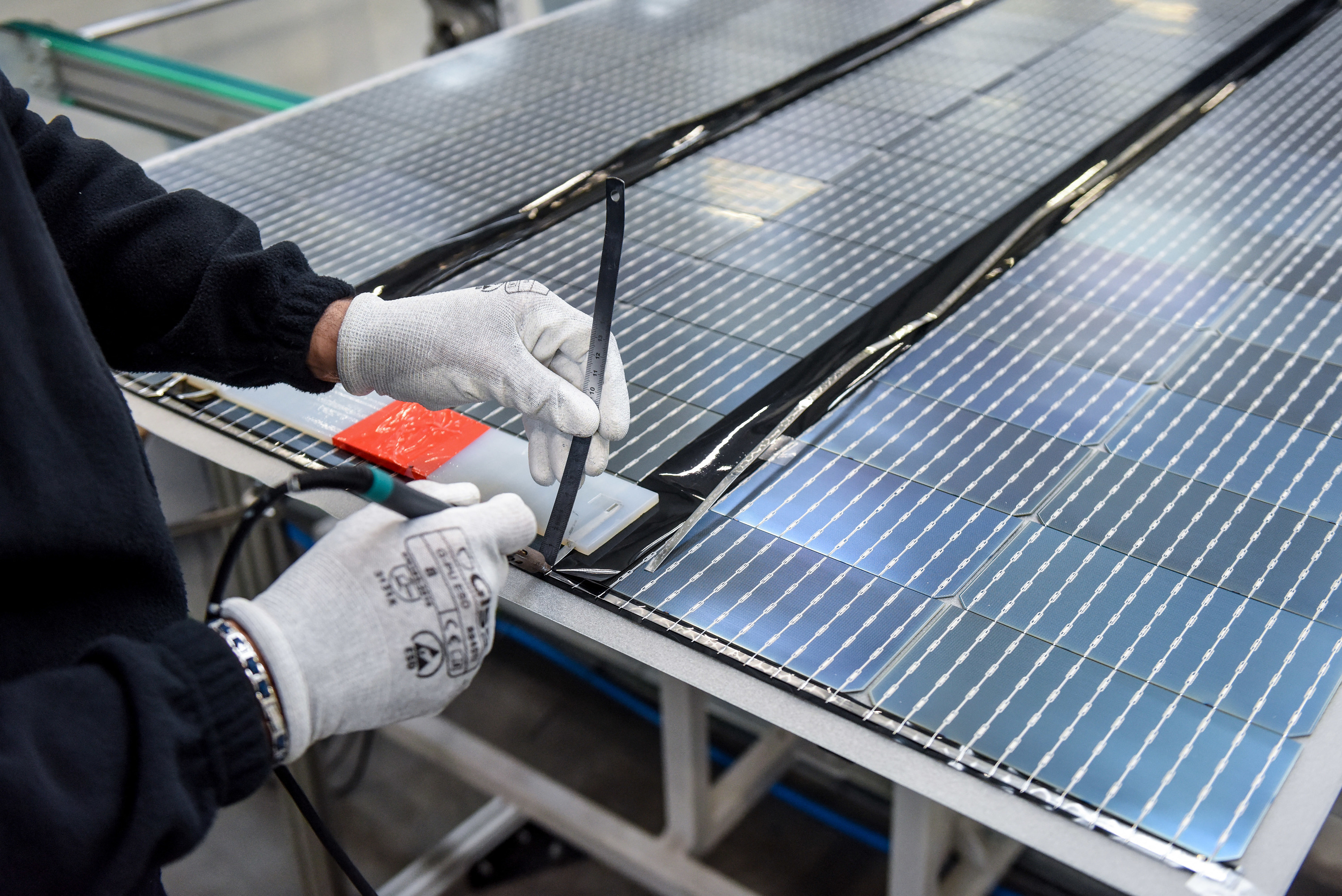Today, the Original should not be missing the Easter egg. It can be painted but grace is far more than colorful festive table. The companies that try it, this work of art to imitate nature to remember currently. No cooks are in the kitchen, but food technologists tinkering in the lab.
Worldwide deliver, for a few years a race to develop sustainable Alternative for meat, fish, dairy products or eggs. The time seems ripe, consumers, replacement products, which are environmentally produced and ethically acceptable. The goal of animal-free products that taste best as the Original one and also the same good process.
This is when the Egg is difficult, because his skills are so diverse. Eggs contain, for example, certain proteins help to form an Emulsion, i.e. water-soluble and combine fat-soluble components, such as in Mayonnaise. In addition, more than 40 proteins of the ice by heat to change to a new consistency, such as for the Omelette. And the Egg contains a foam-forming proteins, the bubbles of air including can, like the Meringue.
provide yeast cells thanks to the chicken Gene is an animal Protein
"Although some of the Egg Alternatives to the capabilities of the natural eggs very close, there is still not a copycat product that combines all of the features," Miranda Grizio and Liz Specht of the Non-Profit organization "The Good Food Institute" in Washington, in a review article. Currently, many plants are already based Egg replacement products on the market, each designed for a property.
A pioneer about the plants-Mayonnaise, the US company Just for the egg yolk pea proteins as an emulsifier. Also counterfeit scrambled eggs, which contain no Egg can fry US consumers already in the pan. The company's researchers have investigated hundreds of plants proteins on the properties that should have the replacement Egg.
The Mimic is a method. Another is that of animal proteins to build accurately – but without the chicken. This way, the staff in the company Clara Foods in San Francisco riding. You are going to imitate the white of an egg, of which the most common proteins, Ovalbumine. In a bioreactor, yeast cells produce these proteins. The researchers used the yeast from the chicken Gene, so that they deliver large quantities of the desired proteins. The method is known. A similar biotechnological process, for example, insulin preparations can be made for diabetics.
With this method the milk without a cow produce. At least the biotechnologists of the company Perfect Day to try, also in the vicinity of San Francisco located so close to Silicon Valley, where new nutrition approaches to enjoy a great deal of attention.
the Perfect Day also with genetically modified yeast, animal proteins namely Casein and whey proteins from the milk. The white juice is supposed to taste like milk. On the market, the products are not yet. The Team is cooperating with the dairy industry, in the future, products such as yoghurt, Quark and cheese are animal-free.
The challenge is to whip up a protein porridge, something that has a similar consistency as meat.
The largest market potential probably want a meat replacement products to be made Flexitariern tasty, so consumers who waive more and more on meat. The number of suppliers and developers is on the rise – also in Europe. For a splash of different burgers are currently mock-UPS, in which between the rolls plant proteins halves are clamped. In Switzerland, the Green Mountain Burger from the company Hilcona in Restaurants, has recently become available. The plants meat component from soy flour, pea, and wheat proteins, is processed to a pulp. The challenge for food technology is lying to whip up a protein porridge, something that has a similar consistency as meat.
Atze Jan van der Goot has been working for years with the Problem. The food engineering of the University of Wageningen in the Netherlands, to establish a new method of a meat substitute made from plant proteins. "It is very hard to imitate meat," says the Professor. Mostly it'll to dry. American colleagues have solved the Problem of the "Impossible Burger" by a Trick. An ingredient in addition to other plant proteins: a Protein from the soy plant, called Leghaemoglobin. It is with the red blood pigment hemoglobin and the muscle protein Myoglobin is related to and provides the typical taste of the meat. "And for the red juice," adds Van der Goot, who has tasted the Burger. "He tastes good." However, the procedure is time-consuming. The Leghaemoglobin is also produced by genetically modified yeast cells.
The technology, developed by Van der Goot, works with shearing forces, to modify vegetable proteins for any. Thus, replacement of meat with thinner fibers, such as the chicken meat can be successful as well as thicker fibers, which are reminiscent of beef. In cooperation with various companies, the Dutch Team is in the process of the method for a large technical scale. With the Swiss fragrance manufacturer Givaudan is for the taste.
How to tender the laboratory meat enough?
Also in the case of meat analogues there are in addition to the replacement by plant proteins, efforts to build the Original track – but not only with the relevant proteins like milk and eggs – but with cells. In the front of the Dutch company Mosa Meat, which introduced its prototype Burger from muscle stem cells, 2013, the media is effective. On the market, the "asexual slaughtered meat" of 2021. The Israeli company Aleph kredenzte last year, the first laboratory-steak, grown from different cell types such as muscle and fat cells – so far, however, only five millimeters thick – and the taste of it you wanted to work.
Long ago, other companies such as the US breeding company, Memphis Meats in addition to bovine cells and swine cells, including those of chickens or ducks in their laboratories. And the Start-up Finless Foods, also from California, wants to offer sustainable fish without nets. In the labs cells from an endangered fish grow up, the blue fin tuna.
Simply, it is not, the Original to build. For example, some of the three-dimensional structure filed. The most important question is: How delicate the laboratory meat enough? The employees of the company Modern Meadow from New Jersey were with your product of dried meat from bovine cells – apparently not satisfied. With biotechnological methods for leather produce.
This Text is from the current issue. Now all of the articles in the E-Paper of the Sunday newspaper, read: App for iOS App for Android – Web-App (Sunday newspaper)
Created: 20.04.2019, at 17:21

 Torrential rains in Dubai: “The event is so intense that we cannot find analogues in our databases”
Torrential rains in Dubai: “The event is so intense that we cannot find analogues in our databases” Rishi Sunak wants a tobacco-free UK
Rishi Sunak wants a tobacco-free UK In Africa, the number of millionaires will boom over the next ten years
In Africa, the number of millionaires will boom over the next ten years Iran's attack on Israel: these false, misleading images spreading on social networks
Iran's attack on Israel: these false, misleading images spreading on social networks New generation mosquito nets prove much more effective against malaria
New generation mosquito nets prove much more effective against malaria Covid-19: everything you need to know about the new vaccination campaign which is starting
Covid-19: everything you need to know about the new vaccination campaign which is starting The best laptops of the moment boast artificial intelligence
The best laptops of the moment boast artificial intelligence Amazon invests 700 million in robotizing its warehouses in Europe
Amazon invests 700 million in robotizing its warehouses in Europe Switch or signaling breakdown, operating incident or catenaries... Do you speak the language of RATP and SNCF?
Switch or signaling breakdown, operating incident or catenaries... Do you speak the language of RATP and SNCF? Transport in Île-de-France: operators are pulling out all the stops on passenger information before the Olympics
Transport in Île-de-France: operators are pulling out all the stops on passenger information before the Olympics Radio audiences: France Inter remains firmly in the lead, Europe 1 continues its rise
Radio audiences: France Inter remains firmly in the lead, Europe 1 continues its rise Russian cyberattacks pose a global “threat”, Google warns
Russian cyberattacks pose a global “threat”, Google warns A new Lennon-McCartney duo, more than 50 years after the Beatles split
A new Lennon-McCartney duo, more than 50 years after the Beatles split The Curse vs Immaculée: two thrillers but only one plot
The Curse vs Immaculée: two thrillers but only one plot Mathieu Kassovitz adapts The Beast is Dead!, the comic book about the Second World War and the Occupation by Calvo
Mathieu Kassovitz adapts The Beast is Dead!, the comic book about the Second World War and the Occupation by Calvo Goldorak 'has never lived so much as now'
Goldorak 'has never lived so much as now' Skoda Kodiaq 2024: a 'beast' plug-in hybrid SUV
Skoda Kodiaq 2024: a 'beast' plug-in hybrid SUV Tesla launches a new Model Y with 600 km of autonomy at a "more accessible price"
Tesla launches a new Model Y with 600 km of autonomy at a "more accessible price" The 10 best-selling cars in March 2024 in Spain: sales fall due to Easter
The 10 best-selling cars in March 2024 in Spain: sales fall due to Easter A private jet company buys more than 100 flying cars
A private jet company buys more than 100 flying cars This is how housing prices have changed in Spain in the last decade
This is how housing prices have changed in Spain in the last decade The home mortgage firm drops 10% in January and interest soars to 3.46%
The home mortgage firm drops 10% in January and interest soars to 3.46% The jewel of the Rocío de Nagüeles urbanization: a dream villa in Marbella
The jewel of the Rocío de Nagüeles urbanization: a dream villa in Marbella Rental prices grow by 7.3% in February: where does it go up and where does it go down?
Rental prices grow by 7.3% in February: where does it go up and where does it go down? Europeans: the schedule of debates to follow between now and June 9
Europeans: the schedule of debates to follow between now and June 9 Europeans: “In France, there is a left and there is a right,” assures Bellamy
Europeans: “In France, there is a left and there is a right,” assures Bellamy During the night of the economy, the right points out the budgetary flaws of the macronie
During the night of the economy, the right points out the budgetary flaws of the macronie Europeans: Glucksmann denounces “Emmanuel Macron’s failure” in the face of Bardella’s success
Europeans: Glucksmann denounces “Emmanuel Macron’s failure” in the face of Bardella’s success These French cities that will boycott the World Cup in Qatar
These French cities that will boycott the World Cup in Qatar Champions League: semi-final schedule revealed
Champions League: semi-final schedule revealed Serie A: AS Roma extends Daniele De Rossi
Serie A: AS Roma extends Daniele De Rossi Ligue 1: hard blow for Monaco with Golovin’s premature end to the season
Ligue 1: hard blow for Monaco with Golovin’s premature end to the season Paris 2024 Olympics: two French people deprived of the Olympic Games because of a calculation error by the international federation?
Paris 2024 Olympics: two French people deprived of the Olympic Games because of a calculation error by the international federation?


















